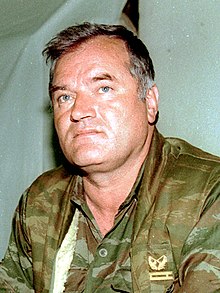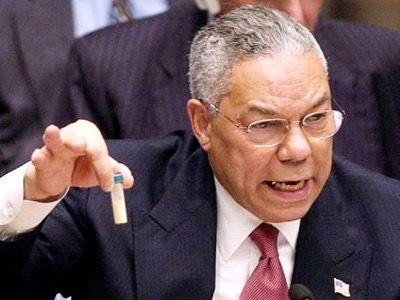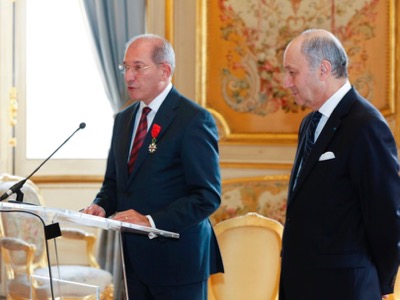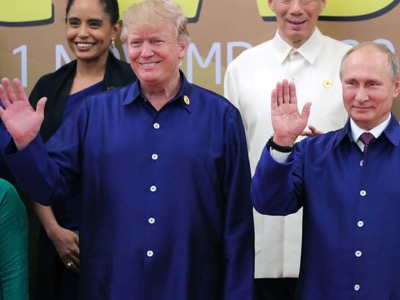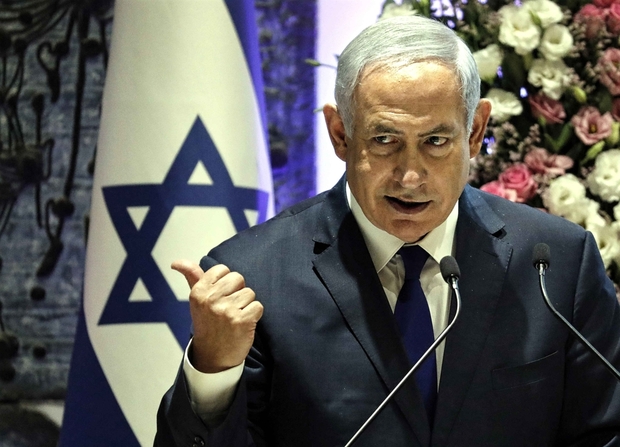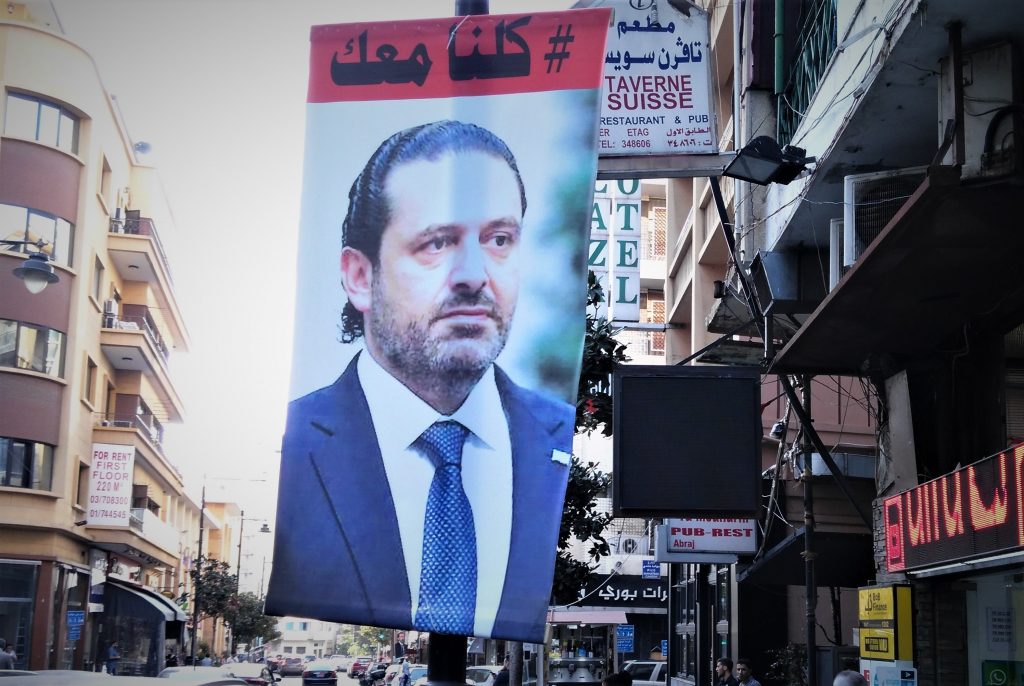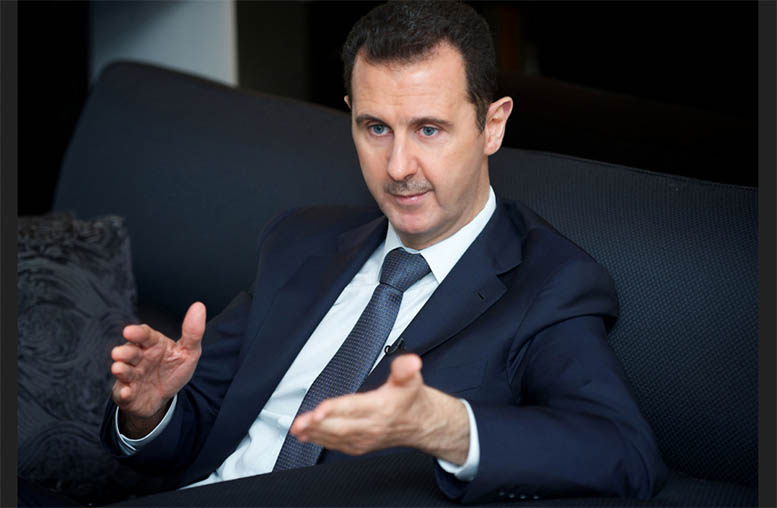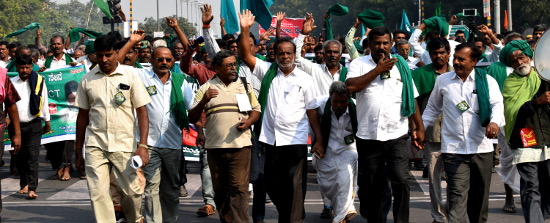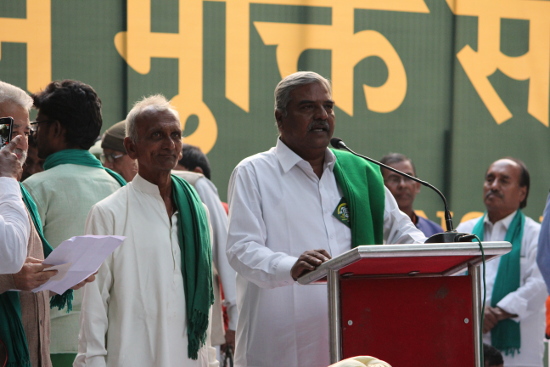This book is a globally unique documentation by Dr. Rosalie Bertell. I think it is one of the most important books of the 21st century. In addition to the author’s original text from the year 2000 there are various updates by herself until 2011 and additional articles written by international experts. As the founder of the “Planetary Movement for Mother Earth” which was organized after having known Bertell’s work (2010) in order to distribute it always more, I have contributed to the book in various ways as well. We translated it and organized its publication. Rosalie has named me her representative in the German speaking part of the world.
When Rosalie Bertell passed, she was 83 years old. We learn from her that free expression of opinions and thoughts about the topic in question, as well as a whole collection of detailed scientific facts, as presented by her, have been suppressed to be discussed for decades. For me there needs to be a public discussion and a theoretical clarification asking the question: In which of the academic traditions, sciences, worldviews, in what logics, politics, and motivation does the literally inconceivable fit that Rosalie Bertell is describing? What are the consequences to be drawn?
Who was Rosalie Bertell?
Dr. Rosalie Bertell was born in 1929 in the United States. She earned a PhD in Biometry at the Catholic University of America, Washington DC, in 1966. She holds nine honorary doctor’s degrees, and she won numerous prizes, among them the “Right Livelihood Award”, RLA (1986); she co-founded multiple organizations including the “International Institute of Concern for Public Health” (IICPH) in Toronto, Canada (1984) and the “International Physicians for Humanitarian Medicine” in Geneva, Switzerland (1999). She has worked as an appraiser for the UN, worked in more than 60 countries for this institution, and was a life-long member of the Roman Catholic Congregation “Grey Nuns of the Sacred Heart”, Pennsylvania, USA. Rosalie Bertell is concerned about human health, the environment and the planet as a whole respectively, and about a warning referring to the dangers we face. Her very first book dealt with nuclear dangers: “No Immediate Danger? Prognosis for a Radioactive Earth”. She was awarded the RLA for this very publication in the year of the MCA in Chernobyl 1986. Due to the several hundreds or even more times greater ultimate MCA in Fukushima in 2011 this book is now more relevant than ever.
“If the public were to discover the real health costs of nuclear contamination, a cry would arise from every part of the world and the people would refuse to continue to passively contribute with their own death!“ (Bertell, 1985, p. xiii)
For today she states:
“What is planned now are climate and weather wars, wars in which earthquakes and volcanoes, floods and droughts, hurricanes and monsoon rains will play a role.“ (Bertell 2013, p. 57)
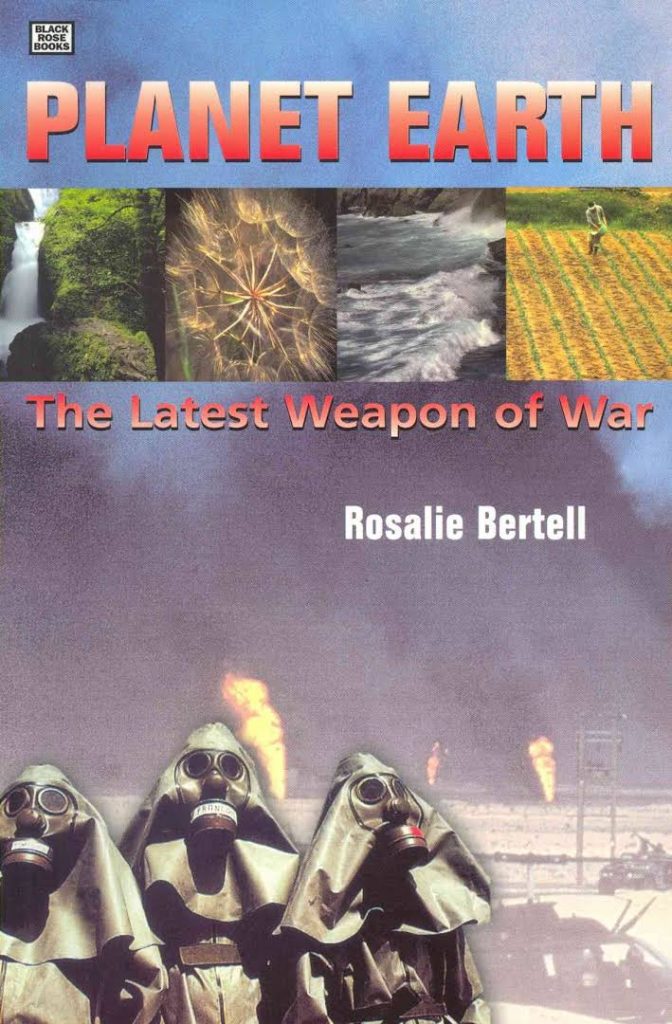 The dangers that we people and the planet are facing today are far more developed in the post-nuclear era without that the dangers of the nuclear one would have diminished.
The dangers that we people and the planet are facing today are far more developed in the post-nuclear era without that the dangers of the nuclear one would have diminished.
Rosalie Bertell is an ethicist of the same magnitude as before her Rachel Carson with her book “Silent Spring” about the fifties and sixties of the 20th century, who was the first to create awareness about the spreading chemical contamination in nature, and its ramifications with regards to steadily growing cancer rates (Carson 1962).
Bertell, too, wants to deliver a wakeup call for people to become active from below. Her hope is that a peaceful, cooperative and wiser world will emerge. The earth is still a wonderful planet, so she believes at the end of her book, as she calls upon us all “to respect it, to love it and to save it!” (Bertell 2013, p. 439)
Bertell is an ecofeminist and a pacifist in the best sense of the word. She stands for respect of the rights of Mother Earth as a “cosmic being”, and of all beings upon, beneath, and above her. She argues for the abolition of the military and of war, for the end of patriarchy as the attempt to dominate all life and meanwhile the earth itself, and for the end of capitalism as the raving and reckless looting of the whole planet.
She stands for the peaceful resolution of conflicts through international courts, and for the necessary foundation of an environmental court that will preserve the interests of the Earth and its safety and integrity, as well as rule over compensation for inflicted damage. Bertell is a most sensible thinker, crystal-clear and keen; she had a sixth sense for the uncovering of hidden information, she was committed and courageous, and she never gave up even though she has been threatened by several attacks on her life.
As a Catholic nun she was backed by her Congregation “Grey Nuns of the Sacred Heart” in the US and had therefore not been dependent on funding by individuals or institutions.
Why is this book so important?
- It is a history of the ongoing destruction of planet Earth through the development and employment of new military technologies
- It shows the reaction of the public and of social movements
- It should be the end of the “conspiracy theory” accusations
- It shows the overall damages to the planet
- It needs more of a theoretical explanation
- It shows the legal situation
This book discusses the history of an ongoing destruction of our Planet, caused by applied natural science, corporate capital, and the military.
Since World War II the development and employment of new military technologies in the East and the West have been the basis of destructions in the very “life systems”, as Bertell calls them, of our planet. The book presents us with a unique historical documentation, which reads like a breathtaking thriller. Its scope ranges from chemical, biological, and nuclear technological development and warfare to the post nuclear, especially in the field of electromagnetic “plasma” weapons, not only threatening to wipe out all life on earth using technologies that are able to produce huge catastrophes, but also threatening to destroy the planet itself. The essence of the thriller Rosalie Bertell has written lies precisely in this escalation. For, it is literally this planetary dimension, which connected to warfare that has been taking action for a long time already, is completely new and unimagined. The beginning of this development started with the use of detrimental substances in industrial agriculture, and in the medical field – such as herbicides, pesticides, detergents, chlorine, and anesthetics – which were used during both world wars. It was Rachel Carson (Carson 1962), the first “eco-feminist” who protested against this development.
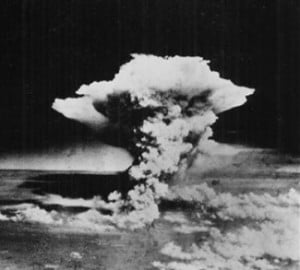
In this handout picture released by the U.S. Army, a mushroom cloud billows about one hour after a nuclear bomb was detonated above Hiroshima, Japan on Aug. 6, 1945. Japanese officials say a 93-year-old Japanese man has become the first person certified as a survivor of both U.S. atomic bombings at the end of World War II.
The story continues with rocket technology and the atmospheric, surface, and underground nuclear and hydrogen bomb tests that have been ongoing since the end of World War II. There have been around 2.300 tests between 1945 and 1998 (s. Bertell 2013, p. 323) beginning with Hiroshima/Nagasaki up to the many tests in the western parts of the United States, in Central Asia and the South Pacific; more than half of them instigated by the US. These tests mark the beginning of a systemic radioactive contamination of the earth and the application of nuclear processes and radiation to food and for medical purposes. The nuclear tests caused the first damages to the ozone layer and all other layers of the atmosphere, and they were particularly detrimental to the layers of the Van Allen Belts, which determine the earth’s magnetic field.
Due to a lack of knowledge about the functions of the upper atmospheric layers in regard to the preservation of the earth’s life support systems, as Bertell calls them, there was complete ignorance about the effects (exo-)atmospheric nuclear testing could possibly cause. The military scientists acted by “trial and error”. Nature’s reaction to an attack on it’s very self would just have to be seen (Bertell 2013, pp 58f, 151, 156f, 158, 167, 476).
The damages to this sensitive mantle of the atmosphere, however, are unaccounted for until today and it remains unclear, if they will ever vanish again. We may never grasp the meaning of the earth’s “life systems” of which the electromagnetic field is a part, or understand the changes it has undergone.
In addition, experiments with the weather began to take place, reaching a first climax during the Vietnam War. They started with experiments on an artificially prolonged monsoon season, with artificially intensified severe weather episodes, using lethal chemicals such as Monsanto’s “Agent Orange”, which was dispersed through sprayings by airplanes, so that the trees would lose their leaves. These experiments moved on to the attempt of creating a hole in the ozone layer, with the objective of triggering a collapse of Vietnamese agriculture through the induction of unfiltered cosmic radiation, consisting of gamma rays, x rays, infrared rays, UV rays, or certain other microwaves, from which intact layers of the atmosphere protect the earth (Bertell 2013, p. 230).
Meanwhile the hole in the ozone layer above Antarctica and the one that has formed recently and for the first time over the Arctic, probably due to radioactivity from Fukushima, allow numerous types of radiation, including the most harmful, to penetrate the atmosphere. Beyond that, this type of radiation is additionally manufactured for medical and electronic use down here (a.a.O.), following the principle of using war technologies in peace as well.
Further, the strategy around rockets and space travel, including supersonic flight, space stations, satellites, and the SDI „Star Wars“ program (Bertell 2013, pp. 184-188; 258ff), centers around projects designed to obtain military control of the Earth from space. “The space will be the next battlefield” (Bertell 2013, p. 177). For this reason thermonuclear bombs have circled above our heads to ensure swifter bombarding of targets on earth, and we have been endangered by plutonium that has been used to fuel rockets like the Cassini during its mission to Saturn, starting in 1997, a potential for widespread and lethal contamination in case of an accident.
Finally, experiments with EM (electromagnetic) waves and the heating up of the upper layers of the atmosphere (Bertell 2013, p. 139ff), called “ionosphere”, from an altitude of 80 km on, began in die 1960ies and 1970ies by influencing this electromagnetically charged layer through the use of “ionospheric heaters”. The most famous of these “heaters” being HAARP (High-Frequency Active Auroral Research Project) in Alaska, built up later in the 1990ies, huge radar installations with antenna and a special energy supply (Bertell 2013, pp.273ff). According to Bertell, the Arctic region has been subjected to a deliberate thawing process through the utilization of EM-ELF (extreme low frequency) waves, action that seems to have been agreed upon by the former Soviet Union and the United States in Vladivostok 1974 already (Bertell 2013, p. 256, 445; Ponte 1976; MacDonald 1968).
This is a kind of borderline science, since much of this knowledge remains outside of the scientific discourse familiar to us. Practically nobody is aware of this new science, even though nearly 40 years have passed. In contrast, scientists, researchers and the population are made to believe that greenhouse CO2 gas emissions by the civilian industry are the cause for the swift thawing of the Arctic region, and are proof of climate warming through CO2 in general! (Storr in Bertell 2013, p. 533).
Meanwhile Exxon Mobile and its Russian colleagues have begun to stake out areas of the Arctic region in their quest for oil…
In the meantime there have been continuous “official“ wars in which, however, new unofficial weapons were put to use, such as laser guided weapons and especially DU (depleted uranium) ammunition, produced from de-riched Uranium 238 which originates in nuclear plants. This has been the case in the Balkans, during the Gulf War with Iraq/Kuwait, and everywhere else since – in Afghanistan, Iraq, and in Libya.
As a result, radioactive contamination in these areas and for those living in these regions temporarily or permanently has increased drastically (see the “Gulf War Syndrome”, Günther 2002, Lengfelder 2006). Research by the geophysicist Leuren Moret has provided evidence of a significant decline in birthrates; a rebound cannot be expected (Moret 2011c, d). In other words, radiation has actually already led to a real decline in population in the respective areas. Fukushima’s contribution to this development (Moret 2011 a, b; Kaku 2011, 6th Info-Letter on www.pbme-online.org) is still completely unforeseeable.
After the many smaller facilities for manipulating the layers of the atmosphere with EM – electromagnetic – waves were installed, such as Poker Flats/Alaska, Plattville/Colorado, and HIPAS/Alaska, the larger ones emerged. This is to be seen in Arecibo/Puerto Rico, EISCAT in Tromsö in Northern Norway, as well as the so called “Woodpecker” in the Soviet Union (Bertell 2013, p. 288ff), and since the early 1990ies the HAARP antenna farms with 180 radar towers in 2002. They are meanwhile accompanied by facilities in the Netherlands and Sweden, Israel, Australia, China, and other countries (recently probably MARLOW near Rostock, northern Germany) as well as by mobile x-band radar as swimming supports, capable of ranging beyond the horizon. About two dozens of these facilities are estimated to be globally operational today. In the year 2013 a new one, MUOS, for satellite coordination, has been built in Sicily (MUOS 2015).
This way, a bombardment or heating up of the ionosphere can occur simultaneously, separately or in opposition to each other, be it for experimental purposes or as a planned attack (see “SuperDARNS” in Bertell 2013, p. 283ff).
For this to work, the electrically charged air of the ionosphere, the “plasma”, which is a unique aggregate state beyond a solid, fluid, or gaseous state (Bertell 2013, p. 143), is heated up using the power of the ionospheric heaters that can add up to GIGA watts, billions of watts. This operation is causing the plasma to densify and to bulge, creating a mirror like reflector from which rays of energy, sent by ionospheric heaters, can be bounced off at any desired angle, and be redirected back to a corresponding point on or under the earth’s surface (Bertell 2013, pp. 279ff). From there the great destruction emanates, that until now could not be explained as an artificially induced catastrophe, though the ENMOD Convention of the UN from 1977, after the Vietnam War, already talked about them, trying to forbid its military use (UN 1977). The use of ionospheric heating with pulsed EM waves as one of the main techniques for environmental modification is especially potent in unleashing or amplifying latent or beginning motion, being along earthquake lines or within active volcanoes. Such processes, utilizing extreme low frequency – ELF – waves, are capable of penetrating and cutting even through the interior of the earth and of causing disturbances at and within its very core, where the magnetic field of our planet is originating (“Deep Earth Penetrating Tomography“ or “Earth Probing tomography”, Bertell 2013, pp. 285ff).
EM waves of different types can also be used to change the “Jetstream” – fast winds moving around the globe on the northern and southern hemispheres being a barrier to temperatures – up north or down south, so that more heat or cold can stream in. The waves can be used to change the course of the vapor-streams – clouds that move around the globe – to influence the development of droughts and floods. They can be used to get more energy than normal transported to certain places, producing fires, thunderstorms and extreme lightning down to the soil, or heavy explosions that resemble nuclear ones. They can be used to keep freak weather conditions on a certain place for a long time. They can be used to move and build up large storms and to influence ocean currents like El Nino and La Nina (Bertell 2013, pp. 445 ff; 465 ff).
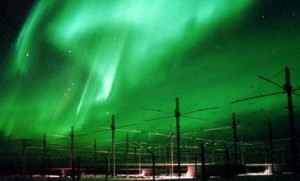
The probably largest ionospheric heater, HAARP in Alaska, is able to set 1, 8 GIGA watts – billions of watts – in motion, and bundle them up to focus on one single point in the ionosphere. The types of technologies existing to destroy the environment have been explained by geophysicist and presidential consultant Gordon MacDonald in his article “How to Wreck the Environment“ published in “Unless Peace Comes” in 1968. That happened 48 years ago! (MacDonald 1968, cf. below)
The prominent journal “The Guardian“, London, has reported about the topic for example (4.4.2012) in an article titled: “At war over geo engineering“. The articles reads as follows:
“…Few in the civil sector fully understand that geo engineering is primarily a military science and has nothing to do with either cooling the planet or lowering carbon … While seemingly fantastical, weather has been weaponized. At least four countries – the US, Russia, China and Israel – possess the technology and organization to regularly alter weather, and geologic events for various military and black operations.… Indeed, warfare now includes the technological ability to induce, enhance or direct cyclonic events, earthquakes, drought and flooding, including the use of polymerized aerosol viral agents and radioactive particulates carried through global weather systems”.
The article mentions as well the role of a gradual warming of the Polar Regions for resource extraction.
This article entirely validates the statements of Prof. Gordon MacDonald, former deputy director of the Institute for Geophysics and Physics at the University of California, and member of the president’s science advisory committee under president Lyndon B. Johnson, made in 1968. The globally renowned scientist writes in Nigel Calder’s book “Unless Peace Comes: A Scientific Forecast of New Weapons“. On geophysical warfare in the chapter “How to Wreck the Environment”, he describes, how the energy fields of the earth can be used to manipulate the weather, resulting in a melting of the polar caps, the destruction of the ozone layer, and the triggering of earthquakes. Prof. Gordon MacDonald therefore established in the 1960s that these weapons were actually in production and that the whole process would practically go unnoticed by their victims if potentially utilized (www.Sauberer-Himmel.de).
- In fact, there was talk in the US as early as 1958 that „Climate control is coming!“ (Newsweek 1958): Edward Teller, “father” of the hydrogen bomb, was at the very front regarding the discussion of possible warfare through the manipulation of weather, for instance dumping aerosols into the atmosphere (cf. Hamilton in Bertell 2013, pp. 498ff).
- The UN ENMOD convention of 1976/77 – now 40 years ago – describes these abominations, and prohibits the military or any other hostile use of these technologies. In the meantime, they are heard of on a daily basis today: earthquakes, tsunamis, droughts, and floods, change of weather patterns throughout entire regions, ocean currents and tornados, changes of the ozone layer and the ionosphere (cf. Bertell 2013, p. 46; Storr in Bertell 2013, p. 527).
- In the year 1997 the former US secretary of defense, William Cohen, voiced his concerns about the possibility of precisely these types of weapons being put to use by terrorists (cf. Bertell 2013, p.291).
- The EU Parliament conducted a hearing in 1999 in the matter of HAARP. The hearing remained without consequences, despite all the warnings. It, nevertheless, was admitted by the EU Commission that is has no influence whatsoever on military affairs! (Werlhof in Bertell 2013, p. 36). HAARP communications, however, state that “ionospheric heaters” are designed only for research purposes, and are by no means to be considered as a weapons system. Thus, they would most definitely be in the scope of EU influence, or would have to be prohibited by the UN!
- On the other hand, there is not much talk either about the European ionospheric heaters such as EISCAT in Tromsö, northern Norway. This facility is operated by the German Max-Planck-Institute.
- The UN pronounced another Moratorium on Geoengineering at the Biodiversity Conference in Nagoya, Japan, in 2010, prohibiting the private and publicly uncontrolled use of geoengineering (Bertell 2013, p. 318).
- In 2013 nearly 50 European activists and several members of the European Parliament, organized in “Skyguards”, made another intent to mobilize the EP via a conference “Beyond Theories of Weather Modification – Civil Society versus Geoengineering”, accompanied by a Petition to the EP that was even accepted by the EP-Commission on Petitions in 2014 (Werlhof in Bertell 2013, pp. 33-41). In 2016, nevertheless, the same happened to this petition as to the one of 1999: Ex-MEP Josefina Fraile from Skyguards, who had organized the Petition, got a letter from the EU-Commission telling her that military questions are not to be treated in the realm of the EP – though the petition spoke especially about civil geoengineering.
- In general, the Report on “Weather as a Force Multiplier – Owning the Weather in 2025”, prepared for the US Air Force in 1996, shows that the question of “weather wars” is in the hands of the military. A civilian and independent geo-engineering for “saving the world from climate change” is surely not existing (US Air Force 1996).
Results’ summary:
These political experiences seem to contradict the central thesis of Bertell´s book that the earth has already been transformed into a weapon of war, pointing against us as well as against itself in a perverse manner! The meaning behind all this: There is no official recognition of the existence of means and possibilities of warfare that don’t only pose a threat to all life on earth by utilizing the earth’s own forces against us and itself, but beyond that the existence of a capacity capable of destroying the whole planet as such! (Bertell 2013, p. 251f). This danger had been spelled out already by physicist Nikola Tesla (1856-1943, Bertell 2013, pp. 223ff, 468ff), the original inventor of different ways how to use the electromagnetic powers of the planet (Bertell 2013, p. 32, 239f). Using her own forces, the earth can now be compelled to kill its own beings and then possibly coerced into suicide!
The means to destroy the planet are those of “geoengineering” – including electromagnetic plasma weapons and all additional forms of weather wars (Bertell 2013, p. 317). If these technologies used in an enhanced form, if the increase of rhythmically pulsed EM waves and the effect of their resonance becomes practically unlimited (Tesla’s “Magnifying Transmitter“, and “controlled earthquakes“, Bertell 2013, p. 288), the earth could possibly even be torn apart, plunge into the sun, or in last consequence, be hurled out into space! Special “Scalar” EM effects of resonance could be instantly reflected, when originating from the earth and penetrating space. A result could be the earth’s destruction through the sun, or the dynamic balance bet originating from the earth and penetrating space ween the earth and the moon, sharing the same magnetic field, could fall apart… Nikola Tesla, the most innovative mind in regard to the work with EM waves, predicted and warned of all these scenarios as a theoretical possibility at the beginning of the last century already (Bertell 2013, p. 465ff).
Further developments:
- The further development of EM weapons in dimensions of longitudinal “scalar” waves, as first developed in the Soviet Union, has found particular focus in the work of former member of the US Army, Tom Bearden, a scientist and disciple of Tesla’s who has been quoted by Bertell (Bertell 2013, pp. 223ff, 238ff, 465f; Bearden 1986/2002). This chapter of weapons technology with (longitudinal) scalar waves appears to be even more mysterious than that of other (transversal) EM waves. Considering that in the so-called vacuum or hyperspace – the “ether” (according to Tesla) or the space beyond the solar system – the movement of these scalar waves reaches beyond the three – dimensional terrestrial space and its conditions, acting independently of each of them under at least four – dimensional conditions – the three dimensions of space and the time dimension. This means for instance that scalar waves are simultaneous, they don´t need time to spread. Military application of these processes on earth – that is working with “unlimited” extra-terrestrial conditions under limited terrestrial ones (cf. first Wagner 1970 on nuclear fission on earth) – would be and actually is the greatest imminent threat (Bearden 2012; Wood 2010).
- Besides the effects triggered on a macro level, other effects that are no less eerie could be caused by EM waves on the micro level as well. We are talking about the interference with our brains using ELF waves that correspond to the pulse – the Schumann frequency – of the earth, which is the same as that of the brain (Begich/ Manning 1996; Bertell 2013, p. 289). These methods have apparently been developed predominantly by the Soviets, and can also be applied to larger populations, according to Bearden.
All this happens true to the motto: Electromagnetic pulses can reach anywhere, due to the fact, that matter itself “oscillates” (Begich/Manning 1996). This is finally the real “secret” of the magnitude and efficiency of the new Tesla-technologies as patented for their use in ionospheric heaters (official US patents by physicist Bernard Eastlund, Bertell 2013, p. 277ff) and elsewhere (Bearden 2012; Wood 2010).
The reaction of the public and of social movements
Through Bertell we are now finding out that we, the public, humans, and citizens have been vulnerable to this increasing threat since ca. 70 years without being made aware of it, let alone having been asked for our approval or “consent”, even though these developments are life endangering for us and the planet and have eroded conditions of life globally. Actually, if these threats are not brought to a halt, our living conditions and the earth itself could be destroyed within a brief period of time already.
Considering Bertell’s quotes: “The military is always 50 years ahead“. And:
“The military never uses the same weapons in a new war that have been used in an old one” (Werlhof in Bertell 2013, p. 48; Bertell Interview II, 2014).
We, as the allegedly responsible citizens:
1. Although embarrassing, we must now come to grips with the fact that we have not been aware of anything that has been going on in this field.
2. We need to realize that since the end of the “Cold War” we have allowed ourselves to believe in the end of wars, at least in the end of large-scale wars, and in the absence of the threat through another world war, nuclear war, let alone environmental wars, wars due to “natural” disasters, energy weapons, and eco terror! We held and still hold it unthinkable that the earth’s own forces can be used against us and the earth itself, and we even did not know about these forces at all…!
3. So, we have to ask, how and if at all there is still a differentiation between friend and foe, civilians and the military, conquerors and the conquered. Why has this distinction evidently become irrelevant? What kind of a war is this?
In respect to social movements, from Bertell’s analysis follows:
- A peace movement exists that has not recognized that there is a modern war, that is directed at and against the environment (Bertell 2013, p. 57f; 325f; 344ff).
- On the grounds of a continuously more obvious destruction of the environment, there nevertheless exists an ecological movement that has not yet realized the problems, which have particularly been caused by the military (Bertell 2013, p. 71).
- The anti- nuclear movement has not realized the post nuclear development of weapons of mass destruction within the military that supersede the necessity of nuclear wars (cf. Bertell 2013, p. 58).
- Right now a trend toward the creation of „environmental justice movements“can be observed. These “movements” intend to promote civil “geoengineering” within the fields of civil science, politics, and private industry, by claiming to fight “climate warming”. They are predominately comprised of geo-engineers. They claim to be in the position to fight climate warming without actually confronting the causes! (Hamilton in Bertell 2013, pp. 485 ff; Bertell 2013, p. 312ff). The blame for climate warming is laid down on the doorstep of civilian CO2 emissions, a position that is being taken only since 1997 (Kyoto protocol, Bertell 2013, p. 311).
According to Bertell, not a single climate conference ever mentioned CO2 before that! However, the movement of geo-engineers does not focus on the reduction CO2 emissions at all. On the contrary, this movement assumes that there is no chance of politically enforcing any considerable norms in this regard anyway. This “movement“ is targeting the alleged symptoms and not the problem of damages of the earth itself while attracting considerable funding and technical resources (Fraile 2015; Weiss 2014; 2016).

Rosalie Bertell
Under the premises of the CO2-thesis, these geo engineers tamper with nothing less than the planetary dimension of the earth’s elements. With the oceans (“ocean fertilization”), the layers of the air (aerosols, “Solar Radiation Management”, SRM, sprayings, s. Bertell 2013, p. 2543; 319), and the ground (deforestation (!), action in regard to more “albedo“, sun reflecting white spaces and clouds), to screen the earth against solar heat and/or for more effective CO2 absorption and to eliminate the necessity of CO2 reduction. Although the dangers resulting from CO2 are supposedly threatening, this approach denies the need to further deal with the issue – that is how to get rid of it itself! The process of fighting “climate warming”, once initiated in an engineering context, would need – as is said by geo-engineers – to be sustained “indefinitely” in order to maintain the climate and not risk an immediate overheating of the planet under the sweltering heat of a sun allowed to shine in blue skies. As a matter of fact, a partial warming of the earth is indeed taking place. However, this is not happening in the troposphere where CO2 actually accumulates, but rather in the higher layers of the stratosphere in which HAARP and similar facilities – the “ionospheric heaters” – are active! (Phillips 2011).
In total, global warming cannot be a result of CO2 emissions after all! (Bertell 2013, pp. 321-323). CO2 is dirty, but it is not heating up, as she says.Apart from Bertell hardly anyone has noticed that the environmental crisis in the guise of the so called climate crisis, as well as the alleged solutions for this crisis, namely geo-engineering, both originate from the same military laboratories!
Ironically, as said in Hamilton’s contribution to Bertell’s book: The military itself does not assume the existence of any kind of climate crisis at all! The measures of military geoengineering do not aim at reducing climate warming. These measures have been invented for completely different reasons, namely military ones: they are geo-weapons (Bertell 2013, p. 58).

Instead of figuring out how to stop military disruption and manipulation of the climate through, as Bertell states, “weather wars, plasma weapons, and geo engineering” by, for example, turning off “ionospheric heaters” globally, the discussion is focused on fighting the consequences of this global war – precisely by employing the same measures that have actually caused them!
The fact that it isn’t the alleged CO2 issue or even „evil nature“ opposing us, remains concealed due to the creation of deliberate confusion! One of most generous private sponsors of geo engineering, which poses as a civilian measure to counter the consequences of CO2 emissions, while actually being a military scheme towards the planet, is the wealthiest man on earth, Bill Gates (Bertell 2013, p. 253f; Hamilton in Bertell 2013, p. 504).
The end of “conspiracy-theory” accusations?
Bertell’ s book could be the beginning of an end to insults and suspicions that have been geared toward making all this sound like a “conspiracy theory” (a term invented by the CIA to revile those who doubted the official version of the murder of J.F. Kennedy). Where the corresponding current developments are dragged out of the dark room of anonymity, secrecy, denial, and concealment – as Bertell has done –, it will not be possible anymore to brush the facts off!
This, nevertheless, is not yet happening, as we know now, five years after having published Bertell in German – the first real public appearance of her book after the sudden bankruptcy of her English publisher in 2000. The background of this strategy to hide the facts can precisely be seen in the ongoing concealment of the connections between environmental crisis and military experiments and attacks. Hiding by all means a meanwhile “unofficial” and/or possibly already raging undeclared war, is necessary in order to not risk opposition from civil society, or even from law, as would inevitably happen if reality were to become publicly evident (Storr in Bertell 2913, p. 545). MacDonald, who has been mentioned earlier, explains that such a ‘secret war’ need never be declared or even known by the affected populations. It could go on for years with only the security forces involved being aware of it (MacDonald, 1968). This kind of “geo-terrorism” and as such “technetronic” (MacDonald) warfare would appear in the guise of militarization or “weaponization” of “industrial mishaps”, “environmental disasters”, and “geo-engineering” (Phillips 2011).
Rosalie Bertell states that the military needs us for legitimization since it is in need of civilian resources (Bertell 2013, p. 388) and legwork, as e.g. done through scientists, and our belief in its ability to create security in a military sense (Bertell 2013, p. 365) and in case of disaster. To have us assuming that it produces these disasters itself would of course be a bad fit! The civilian academic field is precisely one that asserts the impossibility of this type of disaster occurring due to a deliberate manipulation of natural events. All the catastrophes of the past decades, namely 10 times the number of natural disasters as compared to before 1970 (Bertell 2013, p. 306) and the unending cluster of most severe earthquakes globally, are nothing but simple natural events for them. We must not forget, that „normal science“ is unable to explain these phenomena, as they have never taken into account what Nikola Tesla had explored and invented. The earth seems to have remained unchanged tectonically and seismically, and there are no reasonable explanations for the increase in volcanic activity, for instance.
Yet, it is science itself enabling the dangers discussed by Bertell. For without science the development of the relevant technologies pertaining to our topic would never have been possible. It is important to bring the invisible doings of a science serving the military to awareness within the sciences themselves. Civilian science is going to lose its reputation and credibility in public, when trying to disguise possible and current mega crimes that would not be possible without its cooperation with military science in the first place. As Lowell Wood, “civil” geo-engineer and disciple of Edward Teller put it:
“We as humans always influenced our environment the way we wanted it. Why not the Planet?” (Hamilton in Bertell 2013, p. 501).
The overall damages to the planet.
Meanwhile, the earth, our planet, is in critical conditions. According to Bertell it has been weakened and could already have been irreversibly damaged (Bertell 2013, p. 59, 228, 320, 323, 326, 455, 473). The planet has become „a research victim of militarism“ (Bertell 2013, p. 483). It is as if air, water, soil, animals, plants and humans are presented like a “sacrifice” (Bertell 2013, pp 325ff) to the “Gods”!
Bertell illustrates how the military causes the greatest environmental damages, usurps most of the resources, and wastes away living conditions on earth by compromising it ruthlessly and without conscience (Bertell 2013, pp. 335ff). She draws parallels between the military and the behavior of an addict. The addict will not refrain from his addiction on his own. Obviously, all this goes without the knowledge or approval of the earth’s population, regardless of our democratic systems and beliefs.
Preliminary effects of the new weapons which have been described here in part, are:
- Apart from damages through mining, chemistry, nuclear and genetic engineering, life industries, Nano- technology, and sprayed substances like aluminum, barium, sulfur and lithium, that continue to destroy the atmosphere, the soil, the water, plants, and living conditions,
- there are holes in the ozone layer, produced by decades of nuclear testing, supersonic flights and rocket flights into space (and not by FCKW as we are constantly told!)
- there are disturbances of the earth’s electromagnetic field within its core as outside in space and in the Van Allen belts,
- there are holes and incisions throughout the protective layers of the atmosphere, produced by ionospheric heaters,
- there is a wobble/an imbalance of the planetary motion (Bertell 2013, p. 450) and a slowing down of the rotation,
- there is, therefore, the possible acceleration of a magnetic polar shift/polar reversal;
- there is the active thawing of the arctic region (Bertell 2013, p. 227) since the 70ies of the 20th century
- causing an increase in ocean levels, a loss of fresh water,
- and there is a weakening of the gulf stream by 1/3 already, the end of which would mean a possible new ice age for Europe.
- There is the disappearance of the glaciers worldwide that leads to huge floods now and to extreme droughts later with the effect that the large rivers of the world would run dry and leave the population and nature without fresh water.
- Further, the outer layers of the atmosphere are decreasing by 1 km every 5 years (Bertell 2013, Chapter 3-5 in Part II, additional Texts A, D, C in Part IV).
- This means the loss of protection of the atmosphere against cosmic radiation like UV, Gamma, microwaves and x rays on the earth´s surface (Bertell 2013, p. 230), detrimental for all life on it and,
- if more, finishing with agriculture.
- It means weather and climate chaos everywhere and loss of any equilibrium to be expected.
- It means natural catastrophes of any magnitude, and that it will mostly be impossible to distinguish between natural and manufactured ones, especially when the tipping point is reached, and synergetic effects enter into play.
- It means that no catastrophe can be foreseen, or protected against. Catastrophes can and do happen everywhere and at any moment.
- If used for war these weapons can even lead to a total destruction of the planet as such, as Tesla warned (Bertell 2013, p. 241).
What are the plans? What is going on currently? How much of the earth’s living systems have already been destroyed irreversibly? How is the process of destruction going on already? What means that nature has a time lag of 40-60 years to respond to our manipulations? Does it mean that nothing is going to stop what is only starting to happen now? What actually do we not know about ongoing experiments? (Bertell 2013, p. 305)
We can anticipate: a boomerang effect, a nemesis – a counter reaction – of nature, synergies/tipping points as well as unpredictable “side effects” that will need to be taken into consideration (Bertell 2013, p. 256). “How do I repair a system without understanding it?” This is a question, which geo-engineers pose to themselves with regard to the climate. What they omit in the process is the fact that they are referring to a “system” that has essentially been under attack precisely by them, and that, too, before they had an understanding of it themselves!
The phenomenon of “kyndiagnosia”, the incapacity to recognize danger, is omnipresent in science, politics, economy, ecology, society, and particularly in the military. All the time over society has allowed these institutions to put life at risk – the life of people, nature and now even the planet – for their destructive actions and experiments. Never have the principles of war crimes, defined by the Nürnberg Tribunal after World War II, been applied to them (Bertell 2013, p. 474).
The need for more of a theoretical explanation
Since the whole undertaking causes harm to everyone, it becomes unbelievable and seemingly irrational. An explanation is necessary. Who of us regular human beings could possibly understand this deliberate promotion of insanity?
Rosalie Bertell is explaining the multiple facts she has gathered about the military as an institution that exists for ongoing and planned wars. As it seems clear, therefore, that the military is specialized in destruction and systems of destruction of always new kind, there appears to be no necessity for a more thorough explanation. This necessity, however, exists, because the military technologies stem from the natural sciences, the civil as well as the military ones.
Bertell as a scientist herself, though, has not developed a critique of the sciences as such, which means of modern science. The analysis of the origins and the development of modern science, nevertheless, shows that the military is just the tip of the iceberg. Beneath its water surface, there is the mountain of a science that has been invented in modern times. It started with planning subjecting nature in all its forms, including women as “nature”, destroying and controlling them and nature alike by means of the “scientific experiment”. The respective technologies were first developed in the dungeons of the “Holy Inquisition” (Merchant 1982). These new sciences were not only motivated by a “patriarchal” society that was interested in new forms of subjecting women, but also in working with and for the military from their very beginning (Wagner 1970). Today they are now ending up with trying to control Mother Nature, too, as Earth herself, like a sort of “mega witch”, destroying her, the planet, as we now know.
So, things have remained the same until today, the only, but important difference being that the dimensions and the dangers which have multiplied since, as well as the overall connection between the civil and the military sciences seems to be outside of the general knowledge and consciousness. When looking at the destruction of nature and life that takes place everywhere and can surely not be denied any more, occurring even without any direct war, we then can realize what it means that the sciences are related to the military even where they declare to be “civil” and “peaceful”. This way the whole of the scientific undertaking in reality is a war against life, the military being only its peak. This is exactly what we now are experiencing full size.
So, we now have to answer the question why and how this has happened and is even promoted by the Society, using all possible means, as we have seen.
From the point of view of my approach of the “critical theory of patriarchy”, the military has invented something like a “military alchemy”, an expression that Rosalie Bertell liked very much when she knew about it. (She even wanted a new edition of her book be entitled this way). It means that the patriarchal, women and nature hating – dimension of modern civilization (Werlhof 2016b) goes back to antiquity, where the science and technique of a patriarchal “alchemy” were developed. Their aim at that time already was to start to take control over women, mothers and Mother Nature in order to transform them into a supposedly higher and better life and matter, namely a motherless life and artificial gold (Schütt 2000; Werlhof 2011). They failed in doing so and did not succeed. With the invention of modern science and technology, nevertheless, the modern “alchemists” started with the same project again, being much more successful than at any time before in history. The results can be admired today: the machine, the commodity, money and “capital” in general being the alchemical wonders of modernity which are thought to replace life, nature and “matter” by something more civilized, more developed and more divine!
From nuclear, genetic and nanotechnology to geoengineering, from micro- to macro-life, this has been the path of modern alchemy, the military alchemy of geoengineering being its last invention, as I see it (Werlhof 2011, 2014, 2015).
The “Anthropocene“ (Crutzen 2002) is the result, the earth-era of mankind, to truly be God! This is “proved”:
- by transforming – “hacking” – the planet into a manageable instrument, as if this would be desirable and possible without damaging it;
- by reversing the vibrant planet into a “better” one, a predictable giant machine, a Mega-Machine, and a war-machine!
- by means of intended ultimate control over all of life’s processes, the ones of the planet as a whole included;
- and, finally, through a „taming“ of Mother Earth as a sort of dangerous and life threatening „mega witch“! (“Dr. Strangelove” in Hamilton 2013, p. 498ff)
There are people at work who are not kidding at all, but risk the last and greatest matricide, that of the earth herself. These people are “allowed” to do so! The necessity to demand an end to such a dangerous undertaking and hubris has not been acknowledged, and such undertaking has not been forbidden! It is obviously believed that all this is a desirable “progress” and “development” and really worth striving for. So, as an endeavor it takes on a truly religious dimension. We can see this way, how historically old this kind of “wishful thinking” and hubris is already. A failure seems inconceivable for the perpetrators, and such a thing does not even exist in their minds.
This development has endured for 500 years – rooted in a 5000 years old belligerent-religious-ideological beginning. It comes to a climax and to an end now: We are talking about “patriarchal” thinking and the development of a global “alchemical system” based on the utopian project of the destruction and technical substitution of a motherly nature, a process that appears to have become the “collective unconscious” of today’s civilization. (Werlhof 2010, 2014a, 2015, 2016b; Projektgruppe 2011).
Bertell says about the dangers and the secrecy around military activities:
“Until now, nobody has clearly considered the potential consequences, described them, or admitted to them.“ (Bertell 2013, p.473).
What we will hear in the end might be no different from what the nuclear industry, which in fact remains uninsured against failure, has to say, namely that they assumed that the “worst case” scenario would never actually take place.
Bertell was still somehow optimistic in the year 2000. She was confident in grass roots movements throughout the world and their ability to join forces with international organizations like the UN in order to disempower the military, even abolish war (Bertell 2013, p. 376), and to find a path towards a peaceful and friendly future shaped by respect towards the earth and the maintenance of “ecological safety”.
Today, 16 years later, the ongoing crisis points towards a completely different development, if not to a new world war (Chossudovsky 2012 and 2015) which seem to have begun already. The public, most of civil science, social movements and most politicians, though, have not yet understood how the new weaponry of weather wars, plasma weapons and geoengineering is functioning. They lack any understanding why it should be possible to produce earthquakes, volcanic eruptions, storms, droughts, floods, changing ocean currents, tsunamis, influencing the weather of whole regions, heat and cold, freak conditions beyond the seasons or the climate zones – all mentioned in the UN ENMOD Convention in 1977 already.
The reason is that these effects are mainly due to “Tesla technologies”, based on the manipulation of the electromagnetic potential of the earth. The physicist and inventor Nikola Tesla (1856-1943) has never been publicly recognized by the civil sciences, even if without him there would be no alternating current, no electronic device, and no wireless communication. Tesla´s idea of treating the phenomena of life via its “waves” instead of via its “particles”, taking influence on its movements instead of on solid matter, as was usual in modern science, led to inventions of a character and magnitude that could neither have been produced, nor explained by “normal” physics. Tesla´s inventions (Tesla 1919) were secretly taken over by the military in the East, and the West at the end of World War II, and were never discussed in public. Less was it recognized how Tesla´s inventions were related to Quantum physics, another part of the new physics of the last century, leading to even more terrible weapons, as explained by Bearden, a disciple of Tesla, and Bertell (Bearden 1986; Bertell 2013, pp. 237, 239, 243, 251, 454, 468ff).
“Unfortunately”, says Bertell, “waiting for these weapons to be employed in order to then be able to better understand them will mean the end of our civilization and our life. Our research must be ahead of the threats instead of limping behind. Chemtrails are the attempt of biological and chemical warfare. What they are dumping on us now might only be a pre-taste of what is actually planned”. (Bertell, email 27.1.2011)
What about the legal situation?
“No laws exist that prohibit the tampering with the earth’s climate” (Hamilton in Bertell 2913, p. 502).
Bertell’s stance on this issue: if the military is tampering with our air, our water, the ground and the forces of our earth, or doing anything that questions our living conditions, let alone has the potential to destroy them, then that simply must not happen! First and foremost this needs to be discussed publicly…Beyond all secrecy we must have a right to that!
Environmental advocate Dominik Storr:
“The fact that geophysical warfare against mother earth has no legal repercussions is, however, also a symptom of complete political failure. Politically it has not been possible to generate any binding legal norms concerning limitations, let alone a ban on climate and weather moderating measures.” (Storr in Bertell 2013, p. 528).
For, these remain concealed, and are regarded as inexistent, though the laws concerning human rights in general are sufficient to ban climate and geoengineering, once investigated and proved their necessarily detrimental effects on the health of people as well as of the environment as such. The UN-ENMOD Convention is prohibiting the hostile use of techniques that are altering the environment. This Convention can, therefore, not been taken for legal activities as far as a “scientific and peaceful” use of these techniques is propagated, as civil geoengineering is proposing it. So, the military use of it has to be kept secret (Storr in Bertell 2013, p. 526, 530ff, 534ff).
None of the UN-Conferences has brought to the table a discussion about the military behavior, so Bertell, even though the UN has been well aware of the existence of weather modification for wars since 36 years, and has actually banned this, the topic was not even raised at the conference in Copenhagen 2009, at which climate was the central topic. Nor has this been the case in the COP21 UN-Conference in the same issue in Paris in 2015.
Instead, however, the UN enforced a global Moratorium against geo engineering in Nagoya 2010, prohibiting individual, therefore private action. Who cares? At the Stock Exchange, you can gain money with “weather derivates”.
What can we do?
It is our objective to rouse the public, the media, movements, science, politics, the EU, and above all, the people, especially the youth.
The official theories about global warming and the alleged reasons for it, namely the civil output of CO2 gases, as recently maintained again at the last UN Climate Conference COP21 in Paris (2015), have to be dismantled (Bertell 2013, pp. 300ff). The IPCC – the Intergovernmental Panel on Climate Change – as the main official institution propagating the theory about the importance of CO2, is based on mere computer simulation and has no real proves to offer (Storr in Bertell 2013, p. 533). Most scientists even have severe doubts about the CO2 thesis (Weiss 2016; Wigington 2016). The results of independent scientists like Marvin Herndon are not published (a.a.O.). Investigations like those of activist Dane Wigington are not valued (Wigington 2016), even if he is quoting official sources like a recent speech of CIA-Director Brennan on geo-engineering and some of its methods. Civil geo-engineers, on the other hand, are denying the actual use of these methods, pretending that they are only on the table of discussion for an eventual future use (Fraile 2015, Weiss 2014, 2016). This way they avoid any legal problem, any problem with civil society and any proximity to the military. For, if climate change is the result of the application of military geo-engineering, there is no way to propagate it against climate change!
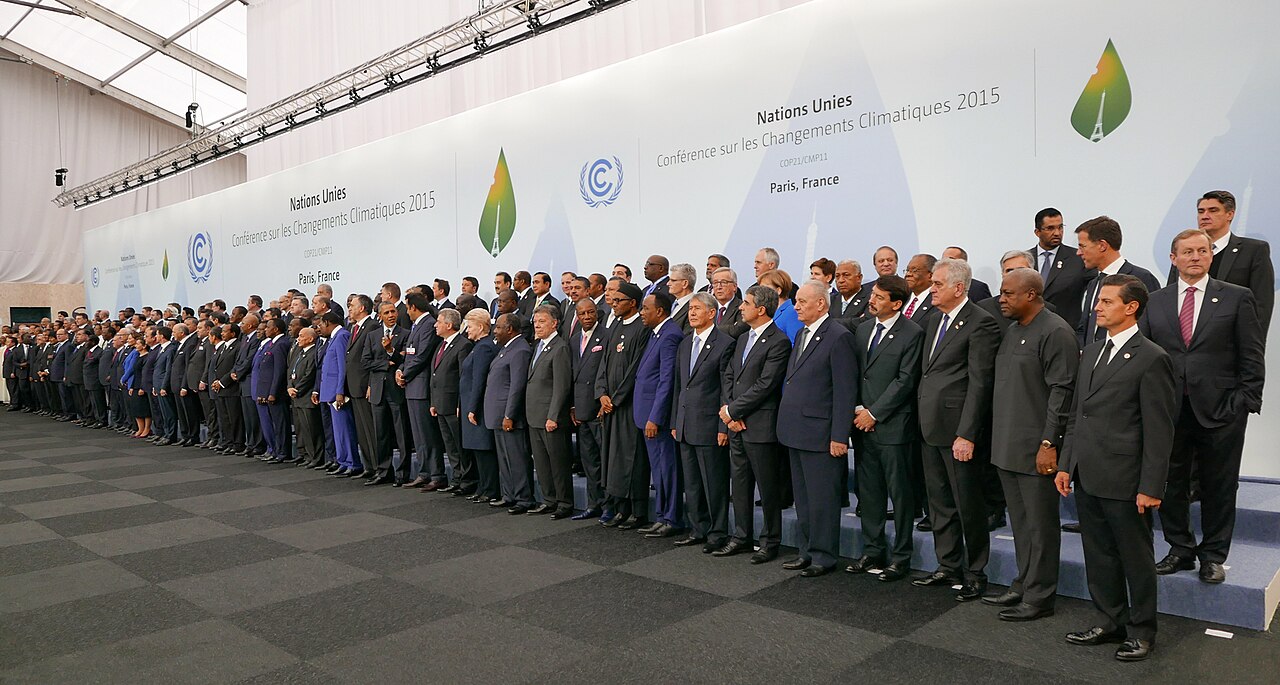
COP 21: Heads of delegations (Source: Wikimedia Commons)
Rosalie Bertell is an eye-opener! She leads us into 7 decades of manipulation and destruction of the earth´s systems, and shows how complicated the reality has become in the meantime, as synergetic effects may have been influential on the one hand, whereas the results of scientific research about them are lacking in public on the other hand.
She shows us that and why a new dimension never considered until now has to be recognized – the planetary one. At the same time, she demonstrates that this planet is a gigantic, but friendly and beautiful cosmic being that wants to maintain the abundance of life it has created over billions of years – us included! Rosalie Bertell is able to see the new dimensions of incredible dangers that are threatening us, to analyze them soberly, and to call for our love for Mother Earth as a mental and spiritual way to move on at the same time. It is an invitation to not give up, not to hide, and not to go into despair, but to start to open up, to join, to get organized and to stand up for this Earth as it is the only one we have. I call it her “planetary consciousness” (Werlhof 2014b), a consciousness for this wonderful planet that has to be loved and protected by us. What else?
Rosalie has called herself an ecofeminist. Isn´t her consciousness and love of Mother Earth exactly what ecofeminism needs today in order to be at the level of a reality that has entered a new dimension, one that has never existed on earth before? The key is, therefore, to wake up to this planetary consciousness before and not after an electromagnetic geophysical war. A new movement will be needed to get to it and a broader theory to understand it.
Bertell’s book is a global warning for all of us.
Claudia von Werlhof is Professor of Political Science and Women’s Studies at the University of Innsbruck, Austria.
This article was originally published by PBME.
You can read the French version here.
Sources
Altnickel, Werner: Kerner und Greenpeace: Über Chemtrails, Massenmord und HAARProben. Ein Interview mit Chemtrail-Kritiker Werner Altnickel, in Kopp Nachrichten, 18.11. 2011
Bearden, Thomas E.: Fer de Lance. Briefing on Soviet Scalar Electromagnetic Weapons, Santa Barbara, Cheniere Press 1986/2002
Bearden, Thomas E.: Skalar Technologie, Peiting, Michaelsverlag 2012 (engl. Gravitobiology)
Begich, Nick und Manning, Jeanne: Löcher im Himmel, Peiting 1996 / Angels Don´t Play this HAARP: Advances in Tesla-Technology, Earthpulse Press
Bertell, Rosalie: No Immediate Danger? Prognosis for a Radioactive Earth, London/Toronto, The Women´s Press, 1985
Bertell, Rosalie: Planet Earth. The Latest Weapon of War, London, The Women´s Press 2000
Bertell, Rosalie: Kriegswaffe Planet Erde, J.K. Fischer Verlag, Gelnhausen 2011/ 2nd ed. Birstein 2013/ 3. ed. 2016
Bertell, Rosalie: Interview: Are we the Last Generations? Radioactivity as progressive extinction of life, in: 8th Information-Letter, 2013b, www.pbme-online.org
Bertell, Rosalie: Interview: Planet Without A Future? New Weapons through the Destruction of Mother Earth 2010, in: 9th Information-Letter, 2014, www.pbme-online.org
Carson, Rachel: Silent Spring, Mifflin, Boston/New York 1962
Chossudovsky, Michel: Towards a World War III Scenario, Global Research, Ottawa 2012
Chossudovsky, Michel: The Globalization of War. America´s “Long War” against Humanity, Global Research, Ottawa 2015
Crutzen, Paul, J.: Geology of mankind, in: Nature 415, 23; 2002
Dahl, Jürgen: Die Verwegenheit der Ahnungslosen. Über Gentechnik, Chemie und andere Schwarze Löcher des Fortschritts, Stuttgart, 2. ed. 1994, Klett-Cotta
ETC Group: The Big Downturn? Nanogeopolitics, 2010 www.etcgroup.org/sites/all/modules/civicrm/extern/url.php?u=129&qid=S7135
Fraile, Josefina: Climate Engineers in Berlin. Coup d´Etat against global democracy – Summarized report of a critical environmental activist, in: 11th Info Letter, July 2015, www.pbme-online.org
Günther, Siegwart-Horst: Uran-Geschosse: Schwergeschädigte Soldaten, mißgebildete Neugeborene, sterbende Kinder. Ahriman, Freiburg (Breisgau) 2000, 2. ed.
Hamilton, Clive: die Rückkehr des Dr. Strangelove – Die Politik der Klimamanipulation als Antwort auf die globale Erwärmung, in: Bertelll 2013, pp. 485-507
Information-Letters of the Planetary Movement for Mother Earth“, www.pbme-online.org
Lengfelder, Edmund: Kaku, Michio in Bob Nichols: Fukushima: How Many Chernobyls Is It? 8.7.2011 (in: 4. Info-Letter PMME, Okt. 2011)
MacDonald, Gordon: How to Wreck the Environment, in: Nigel Calder: Unless Peace Comes: A Scientific Forecast of New Weapons, London, Pelican 1968, pp. 119-213 (see also https://calderup.wordpress.com/tag/unless-peace-comes/, 6.4.2012) http://blog.modernmechanix.com/2012/01/12/climate-control-is-coming/?utm_source= feedburner&utm_medium=feed&utm_campaign=Feed%3A+ModernMechanix+%28Modern+Mechanix%29
Merchant, Carolyn: The Death of Nature. Women, Ecology and the Scientific Revolution, Sn Francisco, Harper & Row 1982
Moret, Leuren: Erdbeben in Japan und Atomunfälle sind Folgen eines tektonischen Nuklearkrieges, www.politaia.org/kriege/bekannte-Geowissenschaftlerin…, 23.3.2011a
Moret, Leuren: Der tektonische Nuklearkrieg wird von den weltweiten HAARP-Partnern beobachtet, www.politaia.org/kriege/leuren-moret…, 27.5.2011b
Moret, Leuren: Mega-Tsunami, totale Kernschmelze und Strahlenkrankheiten, www.politaia.org/israel/leuren-moret-am-14-06-2011, 19.6.2011c
Moret, Leuren: Japan, U.S., Kanada vertuschen Fukushima-Strahlungsdesaster, www.politaia.org/sonstige-nachrichten/leuren-moret…, 21.8.2011d
Morpheus: Transformation der Erde. <interkosmische Einflüsse auf das Bewusstsein, Berlin/München 2010, 2. Aufl., Trinity Verlag i. d. Scorpio Verlag GmbH & Co. KG
MUOS: U.S. Navy Launches 4th MUPÒS Telecom Satellite, in: Spacenews, 3 September 2015
Newsweek (condensed from Newsweek) Climate Control is Coming.
April 1958 http://blog.modernmechanix.com/2012/01/12/climate-control-is-coming/ ?utm_source=feedburner&utm_medium=feed&utm_campaign=Feed%3A+ModernMechanix+%28Modern+Mechanix%29.
Phillips, Jeff: Geo-Terrorism: The Weaponization of ´Industrial Accidents´, Natural Disasters´ and ´Environmental Engineering´, 4, 2011 (cf. www.pbme-online.org)
Ponte, Lowell: The Cooling. Has the next ice age already begun? Can we survive it? Prentice Hall, Englewood Cliffs, N.J. 1976
Projektgruppe „Zivilisationspolitik“(Hrsg.): Kann es eine ´neue Erde´ geben? Zur Kritischen Patriarchtstheorie und der Praxis einer postpatriarchalen Zivilisation, Reihe „Beiträge zur Dissidenz“ Nr. 27, Frankfurt am Main, Peter Lang Verlag 2011
Schütt, Werner: Auf der Suche nach dem Stein der Weisen. Die Geschichte der Alchemie, München, CH. Beck 2000
Smith, Jerry E.: Weather Warfare – the Military´s Plan to Draft Mother Nature, 2006
Storr, Dominik: Eine juristische Betrachtung von Rechtsanwalt Domini Storr, in: Bertell 2013, pp.525-546
Tesla, Nikola: My Inventions V – the Magnifying Transmitter, in: Electrical Experimenter, June 1919, pp.112f, 148, 173, 176 ff.
The Guardian, 4.4.2012: At war over geoengineering, London
UN: Environmental Modification Convention – Convention on the Prohibition of Military and any other Hostile Use of Environmental Modification Techniques, Geneva, 18. May 1977, Web.
U.S. Air Force. “Weather as a Force Multiplier: Owning the Weather in 2025.” A Research Paper by Col Tamzy J. House, Lt Col James B. Near, Jr., LTC William B. Shields (USA), Maj Ronald J. Celentano, Maj David M. Husband, Maj Ann E. Mercer and Maj James E. Pug, 1996
Wagner, Friedrich: Weg und Abweg der Naturwissenschaft, Stuttgart, Klett-Cotta 1970
Weiss, Mathias: Capturing the atmosphere of the CEC 2014 – Climate Engineering Conference, in 10th Info-Letter, Sept. 2014, www.pbme-online.org
Weiss, Mathias: Zur Geschichte des Geo-Engineering, „Postscript“ in Bertell: Kriegswaffe Planet Erde, 2016, 3rd. ed, forthcoming
Werlhof, Claudia von: West-End. Das Scheitern der Moderne als „kapitalistisches Patriarchat“ und die Logik der Alternativen, Köln, PapyRossa 2010
Werlhof, Claudia von: The Failure of Modern Civilization and the Struggle for a “Deep” Alternative. On “Critical Theory of Patriarchy” as a New Paradigm, Frankfurt a. M./New York, Peter Lang 2011
Werlhof, Claudia von: Mit Bertell gegen Geoengineering: Debatte im Europaparlament 2013, in: Bertell 2013, pp. 33-41
Werlhof, Claudia von: Nell´Età del Boomerang. Contributi alla teoria critica del patriarcato, Milano, Unicopli 2014a
Werlhof, Claudia von: „Planetary Consciousness“ – What is that?, in: Return to Mago, USA July 2014/August 2014, in: Magoism, The Way of S/HE, http://magoism.net/2014/07/10/meet-mago-contributor-claudia-von-werlhof/, 14/15 July and 4/5 August 2014b
Werlhof, Claudia von: Madre Tierra o Muerte! Reflexiones para una Teoría Crítica del Patriarcado, Oaxaca, El Rebozo 2015
Werlhof, Claudia von: La destrucción de la Madre Tierra como último y máximo crimen de la civilización patriarcal, México, Noviembre 2015, in: DEP, Venedig, Nr. 30, Februar 2016a, pp. 259-281
Werlhof, Claudia von: The “Hatred of Life”: The World System which is Threatening All of Us. On: Global Research, 16 August 2016b
http://www.globalresearch.ca/the-hatred-of-life-the-world-system-which-is-threatening-all-of-us/5541269
Werlhof, Claudia von: Geoengineering and Planetary Movement for Mother Earth, in: CWS – Canadian Womens´ Studies Journal, Toronto 2016c, forthcoming
Wigington, Dane, 2016 http://www.geoengineeringwatch.org/scientists-surveyed-unanimously-refuse-to-deny-climate-engineering-reality/
Wood, Judy: Where Did the Towers Go? The Evidence of Directed Free-Energy Technology on 9/11, 2010 (Web)
www.pbme-online.org
www.sauberer-himmel.de




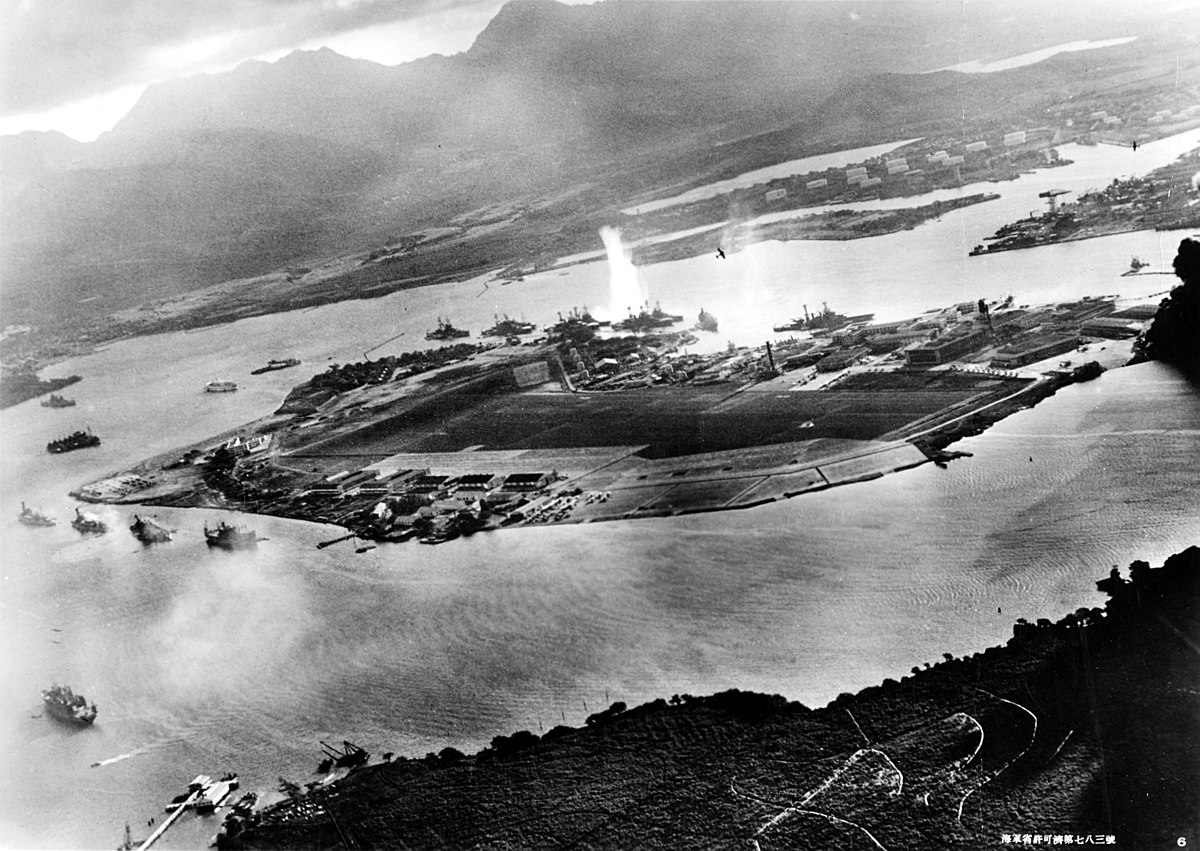


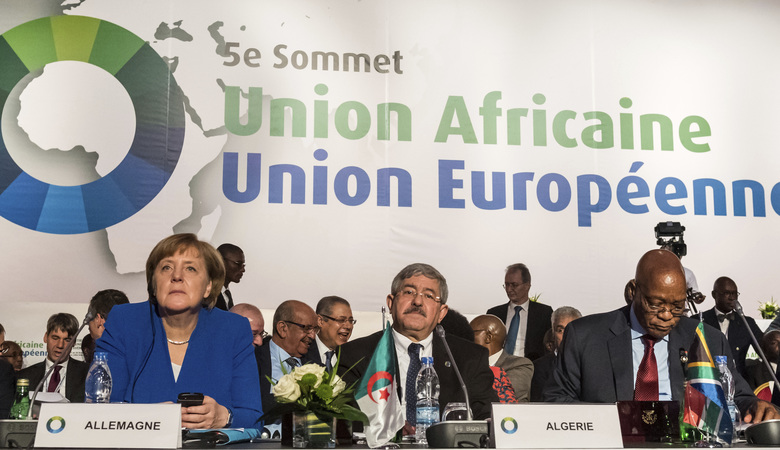


















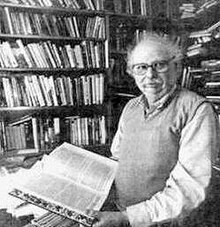

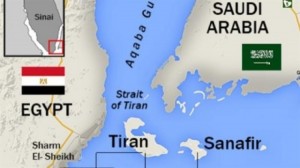 ing to an agreement with Egypt, Saudi Arabia acquired the ownership of the Tiran and Sanafir Islands at the northern entrance of the Red Sea from the Gulf of Aqaba. As a result of its aggression against Yemen the Saudis are aiming to acquire control of the strategic Perim Island at the tip of the Bab al-Mandab Strait to control the southern exit of the Red Sea into the Gulf of Aden leading to the Indian Ocean. This also includes the usurpation of Yemeni rich oil and natural resources.
ing to an agreement with Egypt, Saudi Arabia acquired the ownership of the Tiran and Sanafir Islands at the northern entrance of the Red Sea from the Gulf of Aqaba. As a result of its aggression against Yemen the Saudis are aiming to acquire control of the strategic Perim Island at the tip of the Bab al-Mandab Strait to control the southern exit of the Red Sea into the Gulf of Aden leading to the Indian Ocean. This also includes the usurpation of Yemeni rich oil and natural resources.
